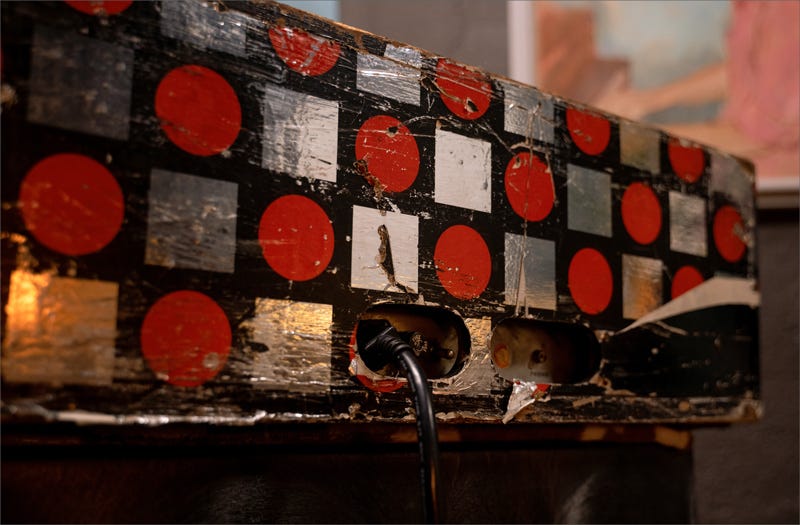Notes on replacing Wurlitzer power cables
Common features of unsafe power cables, tips on installing IEC cables, & more
The power cable is an important part of any vintage instrument, because it allows you to turn it on without danger or mishap. It’s obvious that frayed or cracked power cables should be replaced. More often, though, a vintage instrument’s power cable is in ambiguous condition. It’s not original, and it’s not damaged, but it’s unclear whether you can trust it.
Although a power cable is simple enough, there are a few important features that make it safe to use. If you know them, you can tell if the cables on your vintage instruments are safe. At the end of the article, I offer some tips on replacing power cables, and some suggestions on improving the transformer primary circuit as well.
HARDWIRED CABLES VS IEC
Amplifiers use two basic kinds of power cables: hardwired power cables, and IEC cables. This is the difference between them:
A hardwired power cable is permanently wired to the circuit. There is a plug on one end, and the other end enters the chassis through a small hole. The hole is the size of the cable diameter, so the cable will firmly stay in place without moving. This is accomplished through a little piece of plastic called a strain relief, which will be discussed below. Inside the cable, there are three wires: live, neutral, and ground. Live and neutral connect to the power transformer primary. Ground connects to chassis ground, in a manner that we will discuss shortly.
An IEC cable attaches to the circuit through an IEC receptacle. It works exactly the same as a hardwired power cord, except that the cable can be unplugged for convenience. The IEC receptacle—the part that the cable plugs into—is mounted to the amplifier chassis with screws. It has three prongs for a power cable to plug into, like the inverse of a wall outlet. The prongs continue through the receptacle into the chassis, so that the transformer and ground wires can be mounted on them. This design is a safety feature that prevents the cable from having any exposed, electrified metal parts when the plug is in the wall and the trapezoid side isn’t connected to anything. If the cable were designed with two plug ends, plugging it in would be like sticking a fork into the outlet, except ergonomically.
Both styles of cable work the same way, in that they bring electricity from the wall to your device. That doesn’t mean that they are equivalent for all applications. Just about any conductive material is capable of bringing electricity from A to B, but nobody ever improvises power cables from random wires and metal sticks. That’s because, when we plug a device into the wall, we expect to live long enough to power it on. Safety is an inherent part of a power cable’s design.
There’s more to safety than just the ground prong. Safety is in the thickness of the jacketing, the way the plug fits into your hand, the cable’s placement on the case of the instrument. If an electronic device has a detachable plug like an IEC, there is a reason for it.



